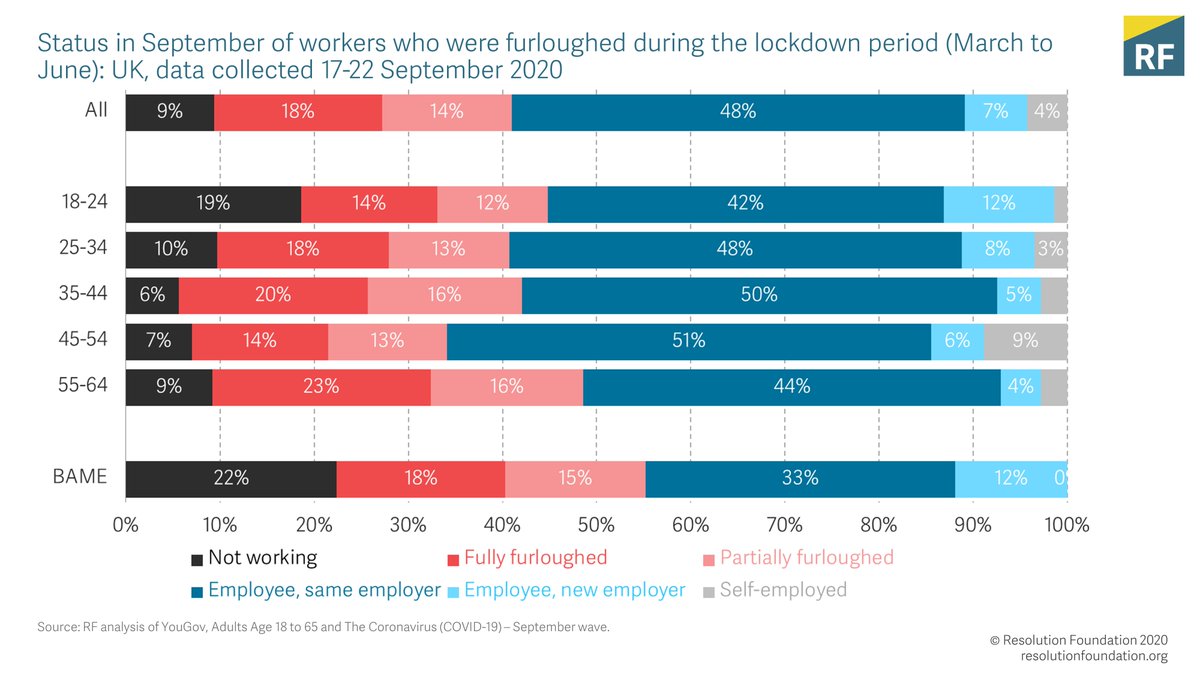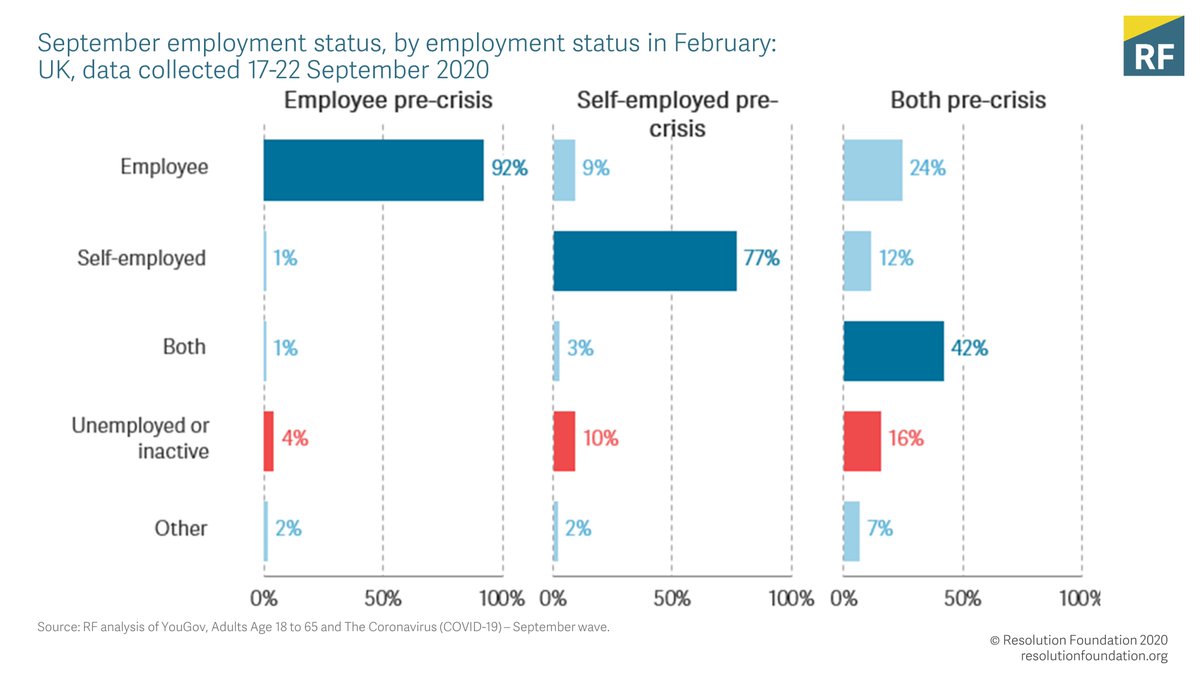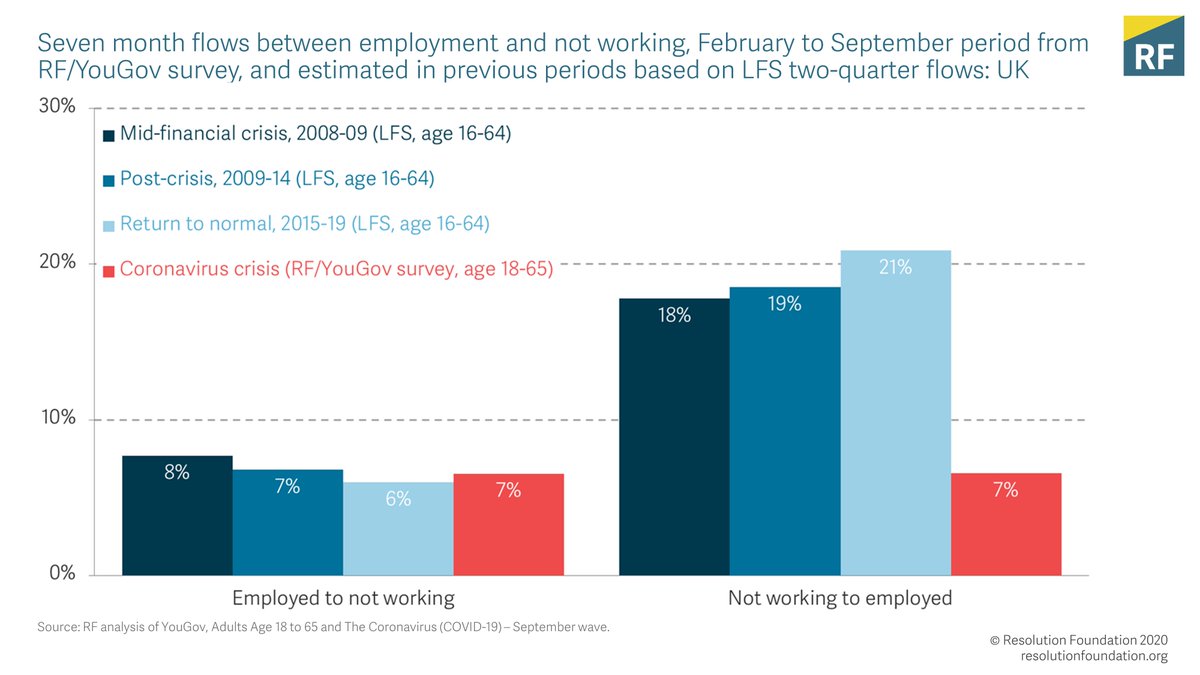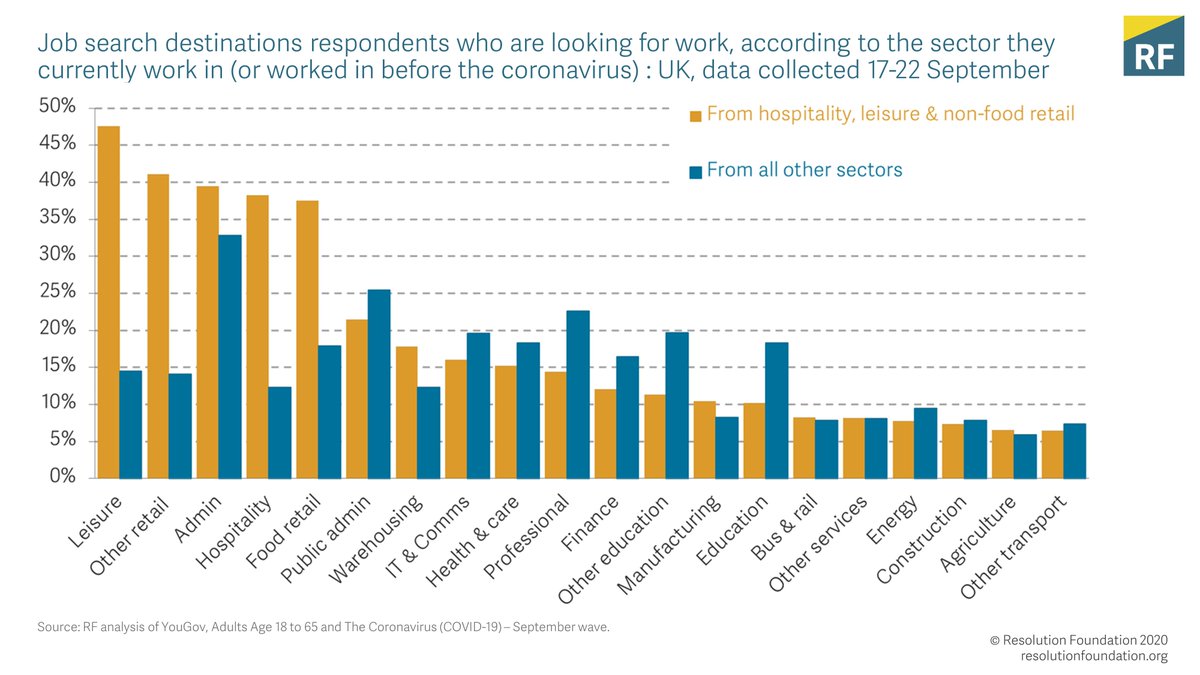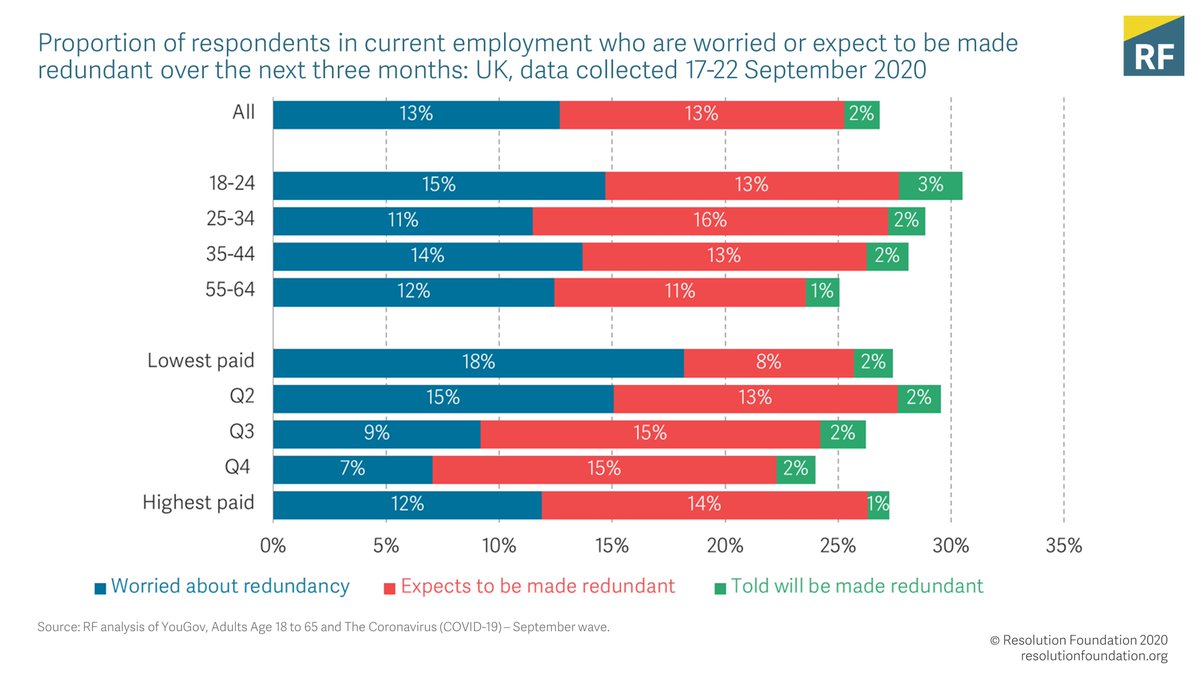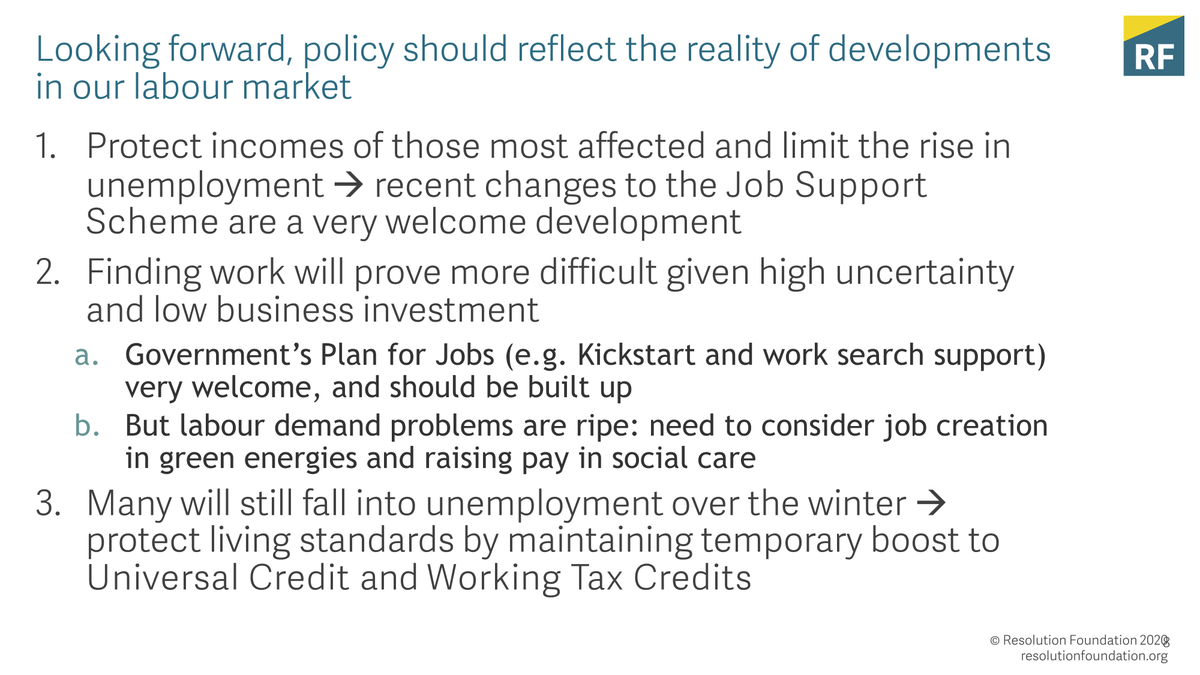The research we’re publishing today looks at how UK working-age adults have fared over the course of this crisis – including what’s happened to those who were furloughed during the peak national lockdown between March and June. 1/10 https://www.resolutionfoundation.org/publications/jobs-jobs-jobs/">https://www.resolutionfoundation.org/publicati...
We find that more than half of workers who were furloughed during the March to June lockdown period had returned to work, with nearly one-in-three remaining on full or partial furlough, and a significant minority (9 per cent) having moved out of work. 2/10
These figures vary for different groups of workers: nearly one-in-five (19%) of surveyed 18-24-year-olds furloughed during lockdown have not returned to work, along with 22 per cent of those from BAME backgrounds. 3/10
Self employed workers have been particularly hard hit by this crisis: 10 per cent of those who were self-employed in February are now either unemployed or economically inactive (compared against 4 per cent of those who were employees). 4/10
But so far, this crisis has been very different from recessions in the recent past: it appears that rising unemployment is driven more by fewer people who are out of work flowing into work – rather than a large swathe of job losses happening at once. 6/10
43 per cent those who lost a job between Feb. & Sept. have returned to work; including just one-third of 18-24s. In fact, younger workers have experienced something of a double whammy: more likely than average to have a lost a job, and less likely than average to return. 7/10
Workers from the hardest hit sectors are still looking for work in these sectors – underscoring the difficulty of career change (not least during a pandemic). 8/10
These challenges require a multi-pronged approach: building on welcome policy announcements and going even further. 10/10
(And of course, expect more on the living standards effects of this crisis from @resfoundation over the coming weeks)

 Read on Twitter
Read on Twitter